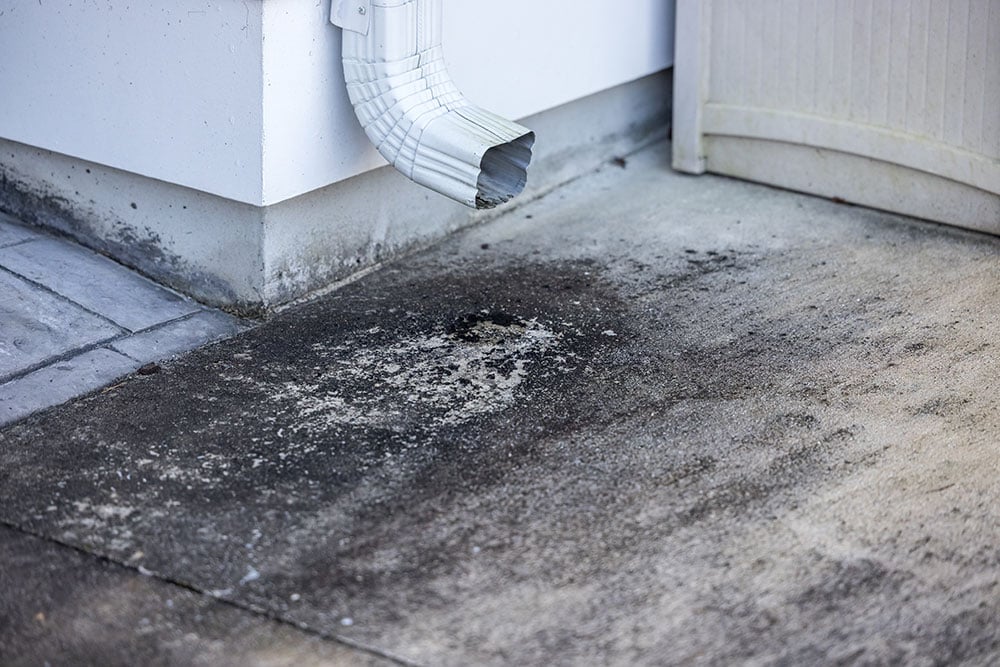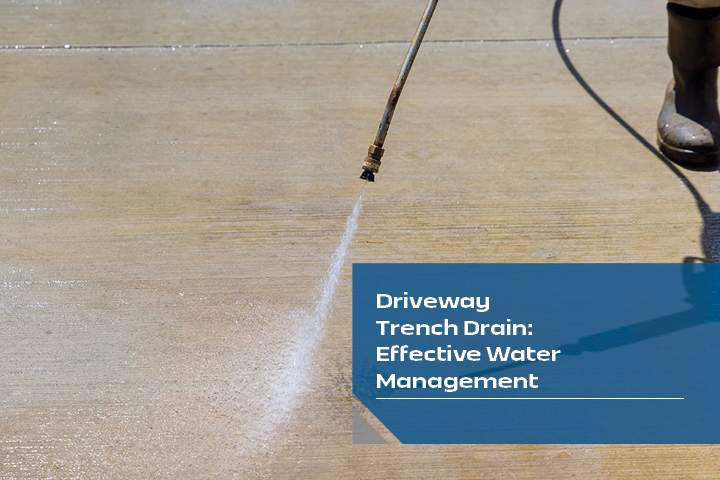Rain benefits nature in many ways, and provides much-needed water to plants and relief from droughts and heat. For homeowners, rain can also be damaging, by causing flooding that can cause serious damage to homes. Even standing water, which may not seem like a big concern, can cause a wide range of damage to property, especially when it collects on your driveway.
What is Standing Water?
When water accumulates in a particular area without moving, it is called standing water. It can accumulate anywhere and is common after rainfall or snow melting. Standing water goes away over time, sometimes quickly and sometimes lasting for days or more. While standing water may seem like it isn't a cause for concern, it is something you want to avoid.
What Are the Effects of Standing Water in Driveways?

Standing water is problematic for many, especially when it accumulates in a driveway. Some problems include, but are not limited to:
Structural Damage
Structural damage is an all-encompassing term. Besides damage to the driveway, it includes a home's foundation, garage doors, basements, walkways, and more. The longer standing water sits, it will begin eroding and cracking the ground. The potential damage to your foundation and other parts of your home is most serious; foundation damage can leave your home unstable. Cracks in your foundation can also allow water to seep inside, damaging walls, ceilings, and floors in your basement and even the main level of your home.
Landscaping Damage
Landscaping is another part of your property that can suffer from standing water. Standing water can erode the ground, leaving ditches where water will continue to collect and spread. It can also suffocate the grass, plants, and trees, effectively killing them. You will be left with an unattractive, patchy, muddy yard filled with dead plants and ditches.
Bad Odors
Stagnant water is dirty water filled with debris. The longer it sits, the more likely bacteria will form. These combined factors can result in a foul-smelling yard that is unpleasant for you and your neighbors.
Attracts Mosquitoes
Standing water attracts mosquitoes and provides a perfect breeding ground for them, which can lead to severe infestations. Not only are they unpleasant to deal with, but they can also carry disease and bacteria.
Mold and Mildew
Mold and mildew thrive in moist environments, making standing water the perfect breeding ground. It can form anywhere the water touches, from the asphalt to the walls of your home. Not only are mold and mildew unattractive and difficult to eliminate, but it also creates a health risk.
How Could a Drainage Solution Help?
The best solution to standing water is to install a residential driveway trench drain. Driveway trench drains help to catch water runoff, by diverting it from the surface and through a drainage channel towards a pre-designated outlet. By redirecting runoff, there is no chance for standing water to collect and cause damage to your property or other unwanted issues. Along with minimizing damage, driveway trench drain systems maintain the beauty of your property, particularly your driveway.
What to Look for in Drainage
Choosing the right driveway trench drain is important. Some factors to look for when considering systems include:
Capacity and Flow Rate
Two essential components of the best trench drain for driveway installation include ensuring an appropriate capacity with adequate flow rates.
The system you choose should be able to handle the amount of runoff you typically get from storms, melting snow, and using your watering hose. In areas prone to flooding, you will want a system with a larger capacity, while drier areas can typically go with a lesser capacity. Flow rates should be adequate for the size of the system, to move water efficiently in order to avoid backups and overflowing.
Durability
Durability is another major component to consider when choosing drainage systems for your driveway. Trench drains for driveways must be strong enough to withstand the weight of a vehicle driving over it without bending, bowing, or breaking. Aside from the durability in terms of strength, it should also be capable of withstanding the corrosive nature of rainwater, any cleaning solutions you may use on your vehicle, and fertilizer runoff from landscaping care.
Material
While many materials are used to create these systems, nothing is more durable than a metal driveway trench drain, specifically one constructed using stainless steel. By choosing a stainless steel system, you are ensuring that you get a durable system that will last for many years without fail.
Driveway Trench Drain Installation
In comparing systems, understanding how to install a trench drain in driveway asphalt, concrete, and other materials is a good idea. It will give you a good idea of how much work will be necessary to install a system. In some cases, installation can vary based on materials; a trench drain in gravel driveway installation can differ somewhat from other materials. Understanding the process can prepare you for the time it will take and the cost to install a trench drain in driveway materials.
Driveway Trench Drain Cost
Cost is another important consideration in considering systems. The driveway trench drain cost can vary depending on the installation's size, flow rate, material, and labor. The cost of driveway trench drains also includes maintenance and replacement parts, which is not uncommon when your system has a drive trench drain grate, which can wear down after a few years.
Choosing a Driveway Drain
There is no shortage of driveway trench drains, with systems coming in various sizes, materials, flow rates, and more. For a system that can meet all the needs of a trench drain for driveway use that also offers an aesthetic appearance, consider Slot Drain Systems. The Slot Drain is similar to a trench drain in that they are both subsurface systems, but with one major difference: it does not require driveway trench drain grates.
The Slot Drain is a linear system that is pre-sloped and pre-assembled, with a slim channel opening available in three widths: .5 inch, 1 inch, and 1.25 inches wide. The smaller widths eliminate the need for grates and allow the system to blend seamlessly in a driveway. The smaller width doesn't affect its ability to drain efficiently, with each size offering flow rates of 11, 18, and 27 gallons per minute per foot of drain, respectively.
The various Slot Drain models come in different materials, with T304 and T316 stainless steel being offered on all of them, to ensure a non-porous, bacteria and corrosion-resistant design that will also hold up to extreme temperatures. They also offer systems with a Load Class C, ensuring the systems can withstand the weight of vehicles. The 4,000, 6,000, and 7,000 Series are all ideal for use as trench drains in driveway designs.


